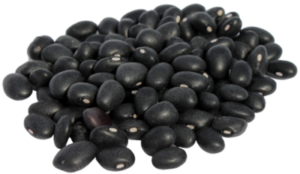India is rich in pulses, also known as legumes or lentils, which are a staple in Indian cuisine due to their high protein content and versatility in cooking. Here are some common types of pulses widely consumed in India:

Pulses And Grains

Chickpeas are popularly used in various Indian dishes, including chana masala, hummus, and snacks like roasted chickpeas. They come in two main varieties: desi chickpeas (smaller and darker) and kabuli chickpeas (larger and lighter).

Lentils are a staple in Indian cooking and come in various colors, including red lentils (masoor dal), yellow lentils (moong dal), split chickpea lentils (chana dal),
and black lentils (urad dal). Lentils are used to make dal, soups, stews, and various curry dishes.
Benefits: Lentils are a good source of protein, fiber, and complex carbohydrates. They are low in fat and rich in iron, folate, and other essential nutrients. Lentils promote heart health, regulate blood sugar levels, and support digestive health.

Green gram, also known as moong dal or mung beans, is commonly used in Indian cuisine to make dal, sprouts, and savory pancakes (moong dal chilla). It is also used in desserts like moong dal halwa.
Benefits: Chickpeas are rich in protein, fiber, and various vitamins and minerals. They may aid in weight management, improve digestion, and help lower the risk of chronic diseases like heart disease and diabetes.

Black gram, or urad dal, is widely used in Indian cooking to make dal, dosa batter, idli batter, and savory snacks like vadas. It is also an essential ingredient in dishes like dal makhani.

Pigeon peas, known as toor dal or tuvar dal, are commonly used in South Indian and Gujarati cuisine to make dal, sambar, and rasam. They are also used in various curries and rice dishes.

Kidney beans are popularly used to make rajma, a North Indian dish consisting of red kidney beans cooked in a thick tomato-based gravy. Rajma is often served with rice and is a hearty and nutritious meal.
Benefits: Kidney beans are packed with protein, fiber, and antioxidants. They may help lower cholesterol levels, regulate blood sugar, and promote colon health. Kidney beans are also beneficial for weight management and may reduce the risk of certain cancers.

Chana dal, or split Bengal gram, is widely used in Indian cooking to make dal, snacks like bhajis, and desserts like chana dal kheer. It has a nutty flavor and creamy texture when cooked.

Split pigeon peas, known as arhar dal or tur dal, are commonly used to make dal, sambar, and various curries. They are a staple in Indian households and provide a good source of protein. These are just a few examples of the many types of pulses consumed in India. Each type has its own unique flavor, texture, and culinary uses, making them essential ingredients in Indian cuisine.

Green peas, also known as garden peas or sweet peas, are a popular legume widely consumed around the world, including in India.
Benefits: Green peas are a good source of protein, fiber, vitamins, and minerals. They support digestive health, boost immunity, and may help reduce the risk of chronic diseases like heart disease and diabetes.

Ragi, also known as finger millet, is a highly nutritious cereal grain widely cultivated in Africa and South Asia. It is rich in calcium, iron, protein, and dietary fiber, making it a valuable food for maintaining bone health, supporting digestion, and providing sustained energy. Ragi is gluten-free and has a low glycemic index, making it suitable for people with celiac disease and those managing diabetes. It can be used to make a variety of dishes, including porridge, flatbreads, and baked goods.

Varai, also known as barnyard millet, is a nutritious and gluten-free grain commonly consumed in India and other parts of Asia. It is rich in fiber, protein, and essential minerals like iron and magnesium, making it beneficial for digestive health, muscle function, and overall well-being. Varai is often used as a healthy alternative to rice and wheat and can be prepared in various dishes, such as porridge, upma, and khichdi. Its low glycemic index makes it a good choice for managing blood sugar levels.